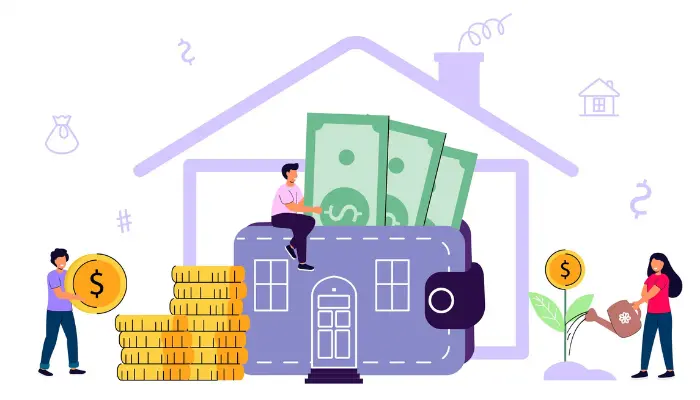Refinancing: How to Lower Your Interest Rates and Save Money
Refinancing is a powerful tool that can transform the way you manage your debts and financial obligations. But to understand how it can benefit you directly, it’s essential to explore its key aspects, from lowering interest rates to qualifying for this opportunity.
Advertising
In this article, we’ll cover the main topics related to refinancing in a clear and practical way, always focusing on your needs and concerns. If you’re looking for ways to improve your finances, follow each section carefully and discover how refinancing can be the ideal solution for your budget.
Lowering Interest Rates
Advertising
One of the main reasons people opt for refinancing is to seek lower interest rates. And who can blame them? With lower interest rates, you save on the total cost of the loan.
The math here is simple: by refinancing at a lower rate, you pay less in interest over time, which can free up a significant amount of resources in your monthly budget.
How Does Interest Rate Reduction Work in Refinancing?
Advertising
The refinancing process typically involves taking out a new loan to pay off the previous one but now with better terms. If the current market interest rate is lower than what you’re paying now, refinancing can bring this savings.
Step-by-Step Guide to Refinancing with a Lower Interest Rate:
- Check the current interest rate: Before starting the process, compare the interest rates offered by different financial institutions.
- Run a simulation: Use online simulation tools or consult your bank to understand how much you can save.
- Submit the refinancing request: Once you’ve decided, contact your bank or a new institution to begin the process.
- Review the terms of the new loan: Ensure that the new conditions are advantageous compared to the previous loan.
- Sign and start saving: After reviewing and agreeing to the new contract, finalize the transaction.
Reducing Monthly Payments

Besides lowering interest rates, another common motivation for refinancing is to reduce the monthly payment amounts. This can be done by extending the loan term or adjusting other payment terms.
Imagine having more breathing room in your monthly budget! Reducing your monthly payments can relieve your cash flow, allowing you to manage your finances with more peace of mind.
Steps to Reduce Monthly Payments:
- Assess your current budget: Know how much you can comfortably pay per month without compromising other areas of your financial life.
- Consider a longer loan term: Extending the loan term can reduce the monthly payment amount, although it may increase the total interest cost.
- Negotiate with your lender: Consult your bank about options to adjust the monthly payments according to your needs.
- Refinance with a new institution if necessary: If your current bank doesn’t offer good terms, other institutions may have more flexible options.
Mortgage Refinancing
Mortgage refinancing is a common practice among homeowners who want to take advantage of better financing terms.
Whether to lower interest rates, reduce payments, or consolidate other debts, refinancing a home can be an excellent strategy to balance your finances.
Benefits of Mortgage Refinancing:
- Interest rate reduction: With falling market rates, you can renegotiate your mortgage to pay less.
- Increased liquidity: Refinancing can free up funds for other investments or emergencies.
- Possibility of paying off faster: In some cases, refinancing allows you to shorten the mortgage term, saving on interest over the long term.
Debt Consolidation
If you have multiple debts, refinancing can be used to consolidate them into a single payment. This simplifies financial management and can offer better payment terms.
By consolidating debts at a lower interest rate, you can significantly reduce costs. And with just one monthly payment, it’s easier to keep track of your budget.
How Debt Consolidation Works with Refinancing:
- Evaluate your current debts: Gather all the information about your debts, including interest rates and terms.
- Run a refinancing simulation: Check if the new interest rate and conditions are beneficial compared to your existing debts.
- Request refinancing: Contact a financial institution that offers this type of refinancing.
- Pay off your previous debts: Use the new loan to pay off the old debts, consolidating everything into one payment.
- Adjust your budget to the new payment: With just one monthly payment, it becomes easier to organize your finances.
Refinancing Calculations and Simulations
Before making any decisions, it’s essential to perform refinancing calculations and simulations. Fortunately, many online tools can help you compare different scenarios and find the best option for your profile.
What to Consider in Simulations:
- Outstanding loan balance: How much you still owe on your original loan.
- Current and new interest rates: Always compare both.
- Remaining term: The time left to pay off the loan.
- Total Effective Cost (TEC): Besides the interest rate, consider all fees and charges involved.
Simulations can show you exactly how much you will save, helping you make a more informed decision.
Costs Involved in Refinancing
Often, refinancing brings some costs that need to be considered. These include appraisal fees, documentation, and potential penalties for early repayment of the previous loan.
Main Costs in Refinancing:
- Loan origination fee: The institution offering the refinancing may charge this fee.
- Notary and documentation fees: In the case of mortgage refinancing, these fees can be significant.
- Early repayment penalty: If your current contract includes this clause, you may be charged for paying off the loan early.
- TEC (Total Effective Cost): Always evaluate the TEC, which includes all fees involved in the operation.
Refinancing Qualification Requirements
Before qualifying for refinancing, you must meet some criteria. Financial institutions usually analyze your credit history, income, and other factors before approving the process.
Main Requirements:
- Credit history: A good credit score makes approval easier and may guarantee better terms.
- Proof of income: Institutions need to ensure that you can repay the new debt.
- Collateral: In the case of mortgage or vehicle refinancing, the asset in question is used as collateral for the new loan.
Preparation is key to successful refinancing. Organize your documents, run simulations, and negotiate whenever possible.
Refinancing can be a great way to improve your financial situation, whether by lowering interest rates, reorganizing debts, or freeing up resources for other purposes.
By following the steps outlined in this article and carefully evaluating each option, you’ll be better prepared to make an informed decision and achieve the financial health you’ve been striving for.





